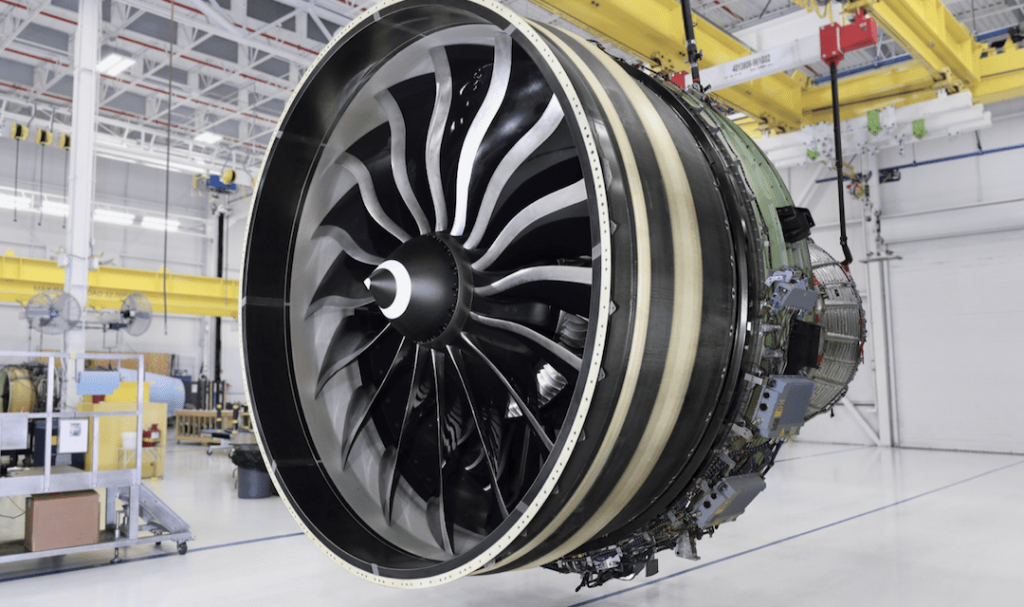
Ever wondered what happens to jet engines when they reach the end of their operating lifespan? These engineering marvels, designed to survive severe heat and stress, do not simply disintegrate. Instead, they frequently set out on a new path with the help of modern jet engine recycling methods and technology.
This article answers all your burning questions regarding jet engine scrap, providing an inside look at how these components get a second life.
What is Jet Engine Scrap?
Jet engine scrap is the materials and components collected from decommissioned jet engines.
These engines use high-value materials such as titanium, nickel alloys, and other superalloys, which may be recycled and reused in various sectors. Recycling jet engines is an important practice that helps reduce waste and conserve important resources.
Jet Engine Recyclability: Why?
Jet engine recycling serves several functions that benefit industries, the global population, and the environment.
First, it promotes environmental goals by lowering the need to mine new raw materials.
Numerous components of jet engines, such as high-performance alloys, are limited in supply and require significant energy to manufacture. Recycling reduces demand and conserves these critical materials.
In addition, recycling enhances economic value.
The materials recovered from jet engines are widely sought after due to their quality and endurance, so they are excellent for reuse in many industries. Among them are aerospace, automotive, and medical equipment.
How Are Jet Engine Materials Recovered?
Jet engines are largely constructed of high-performance materials that withstand harsh operating conditions.
Commonly recycled materials include:
- Titanium: Fan blades and other components are made of titanium, which is lightweight, sturdy, and corrosion-resistant.
- Nickel Alloys: Nickel-based superalloys are employed in the hottest parts of engines, such as turbines, because they are known for their heat resistance.
- Aluminum: Found in various structural components, aluminum is valued for its recyclability.
- Electronics and Sensors: Components (such as wire and control units) can frequently be reused or their materials removed for new applications.
Jet Engine Recycling: What Happens?
The elaborate process relies on several detailed steps.
Broadly, we can break them down like this:
- Dismantling: Engines are disassembled into individual components. Technicians separate components according to material type and condition.
- Sorting: Components are classified as metals, composites, and electronics. Materials that need particular handling, such as lubricants, are also separated. Metals are melted and refined for reuse, whereas composites can be shredded or chemically processed to remove usable fibers.
- Repurposing: Some components, such as turbine blades, can be refurbished and reused in several applications. This careful method guarantees all materials are recovered while conforming to environmental rules.
What are the Difficulties in Recycling Jet Engines?
Recycling jet engines is complicated because of the advanced materials and engineering prowess it takes.
Here are three of the most notoriously challenging facets of the process:
- Material Complexity: Jet engines are made of high-performance alloys and composites, which can be challenging to produce. Specialized processes are frequently necessary to separate and recycle these materials.
- Cost: Recycling jet engines requires expensive equipment and expert scrap metal removal labor, which can eat into profits.
- Compliance: The handling and disposal of some materials, such as lubricants or electronic components, must adhere to strict environmental and safety guidelines.
Even in the face of these three challenges (and others), advances in recycling technologies are increasing recovery rates and efficiency.
What Happens with Recycled Materials?
Recycled jet engine materials find new life in a variety of sectors.
- Aerospace: Recovered titanium and nickel alloys are frequently reintroduced into the aviation supply chain.
- Automotive: Materials such as aluminum that are lightweight and robust are perfect for the production of automobiles.
- Medical Devices: Certain metals are reused in surgical equipment and implants.
- Consumer Products: Composites and metals derived from jet engines can be used in high-end sports equipment.
Is There Any Creative Use for Jet Engine Scrap?
Surprising to many, jet engine scrap is not merely for industrial uses. Creative individuals and corporations have discovered inventive methods to recycle these materials:
- Furniture: Jet engine components like fan blades are turned into eye-catching furniture pieces like tables and seats.
- Art: Sculptors and artists employ engine pieces to create one-of-a-kind works of art commemorating aviation history.
- Collectibles: Aviation aficionados keep minor components like turbine blades as souvenirs.
What Is the Impact of Jet Engine Recycling on Sustainability?
Recycling jet engines decreases waste and the need for fresh raw materials. This helps promote more sustainable resource management inside the aerospace sector and beyond.
The technology significantly decreases the environmental impact of creating high-performance materials from scratch, making it a noteworthy component of the global effort to conserve resources.
What Role Do Airlines and Manufacturers Have In Recycling?
Airlines and manufacturers are major actors in the jet engine recycling industry. Many airlines work with specialized recycling businesses to manage decommissioned engines.
Some businesses, such as those that make jet engines, use closed-loop recycling systems in which materials from older engines are reused to construct new ones. This teamwork ensures precious materials aren’t wasted.
How Can Businesses Benefit from Jet Engine Scrap?
Businesses that recycle jet engines benefit from doing so in several ways.
Here are three of the most appealing advantages of the practice:
- Revenue Opportunities: The sale of recovered materials generates profits.
- Cost Savings: Recycling decreases the need to buy new materials.
- Compliance: Proper recycling ensures compliance with environmental standards and avoids fines and penalties.
Companies that incorporate recycling into their practices improve their reputation as environmentally conscientious businesses.
Jet Engine Recycling: What’s Next?
The future of jet engine recycling is bright, with continual improvements targeted at increasing efficiency and material recovery.
We expect advancements in technology, including laser-based sorting and improved chemical recycling processes, will likely boost the yield and quality of recycled materials even more.
As more companies prioritize environmental initiatives, they further broaden the scope of recycling activities. In effect, this will make the process more accessible and cost-effective.
Jet engine scrap may not be mentioned in many conversations, but its effects go far beyond the aviation industry. Recycling provides these complex instruments a second life, supporting sustainability and providing valuable materials to many industries.
As recycling technologies advance, the possibility of reusing jet engine materials will increase, benefiting businesses and the environment.







